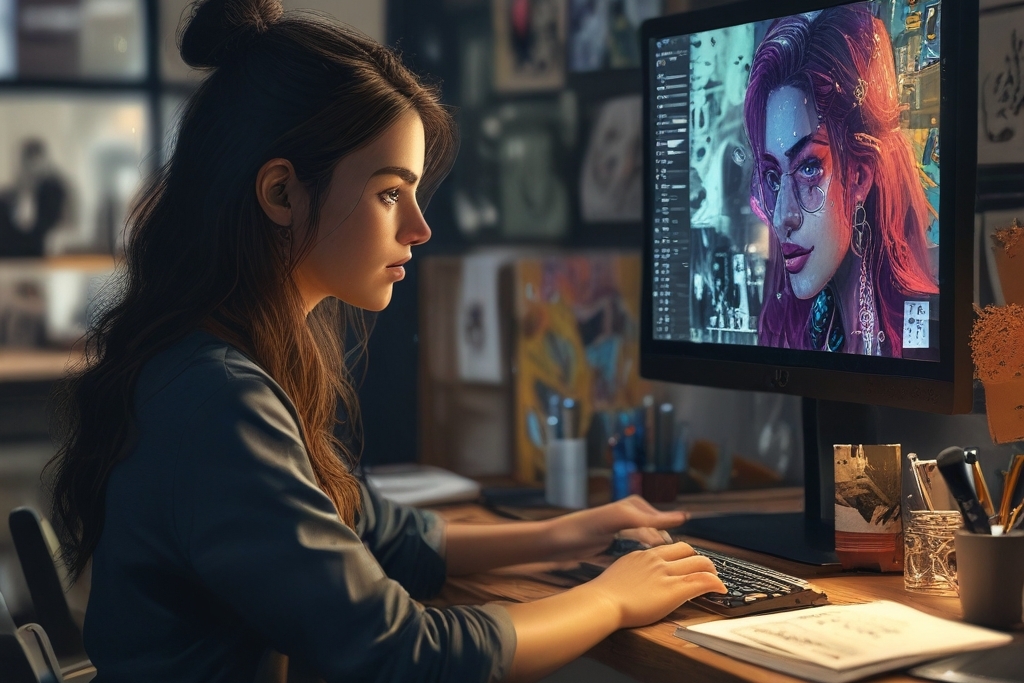Essential Guide to Creating Lifelike 3D Avatars: Expert Tips
Learn essential techniques for creating realistic and compelling 3D avatars with expert tips. This guide covers core concepts, useful tools, and ethical considerations, helping artists and designers craft inclusive digital characters for gaming, social media, and animation. Enhance your skills and produce high-quality avatars responsibly, ensuring movement, appearance, and diversity are well-represented in your projects.

Essential Guide to Creating Lifelike 3D Avatars: Expert Tips
Designing a realistic 3D avatar combines artistic skill, advanced technology, and creative vision. Whether for gaming, virtual meetings, social media, or animation projects, a compelling avatar leaves a lasting impression. This article shares practical advice on crafting stunning 3D characters ethically, aligning with platform policies. From understanding core elements to selecting the right tools, discover how to develop captivating avatars that stand out. Let’s explore the key steps for successful 3D avatar creation.
Core Concepts and Fundamentals
Modeling – Building the fundamental 3D shape of your avatar.
Texturing – Applying colors, patterns, and surface details for realism.
Rigging – Adding bones and structure to enable movement.
Animation – Bringing your character to life with movement and expressions.
Popular Software and Tools
Blender – Open-source software offering comprehensive features for modeling, texturing, rigging, and animation.
Maya by Autodesk – Industry-standard tool used extensively for high-quality character creation.
ZBrush – Specialized in detailed sculpting and fine modeling work.
Unity or Unreal Engine – Ideal for integrating avatars into interactive environments and games.
Pro Tips for Creating Impactful 3D Avatars
Conceptualize and Plan – Start with a clear vision. Sketch your ideas to capture personality traits, proportions, and unique features. This planning stage guides your development process effectively.
Begin with Simple Shapes – Use basic, low-poly models as the foundation. Refining simpler forms is easier than working directly on complex models.
Master Anatomy – Understand human or creature anatomy to ensure natural movement. Utilize reference images and anatomical guides for accuracy.
Use Symmetry Tools – Mirror your work to save time and maintain symmetry, especially for faces and bodies.
Add Details in Steps – Progressively incorporate fine features such as facial expressions, muscles, and surface textures. Patience in detailing enhances realism.
Carefully Texture Your Model – Use high-resolution textures and consider how surfaces react to lighting. Hand-paint details for a personalized touch.
Rig for Mobility – Proper rigging ensures your avatar moves naturally. Focus on correct bone placement and skinning techniques.
Animate Smoothly – Use keyframes to create realistic movements, referencing motion data or footage. Fluid animations improve user engagement.
Test and Improve – Continuously evaluate your avatar for glitches. Refine animations, textures, and rigging to perfect the overall quality.
Ethical Design Practices
Cultural Respect – Avoid misappropriation and honor diverse symbols and attire.
Inclusive Representation – Showcase a variety of genders, ethnicities, and body types.
Consent and Privacy – When using real references, obtain permission and respect individuals’ privacy.
Creating a 3D avatar blends art with technical precision. By understanding foundational concepts, leveraging the right tools, and following ethical standards, you can produce engaging digital personas. Respect diversity and promote inclusivity to make your avatars impactful and responsible.Following best practices and ethical guidelines ensures your work is respectful, accessible, and captivating. Keep experimenting and refining your skills—happy modeling!









